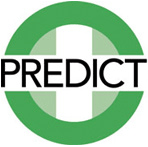The following manuscripts have been published. Congratulations to the authors.
Franklin D, Shellshear D, Babl FE, Hendrickson R, Williams A, Gibbons K, McEnery K, Kennedy M, Pham TM, Acworth J, Levitt D, Oakley E, Schibler A; PARIS and PREDICT. High flow in children with respiratory failure: A randomised controlled pilot trial – A paediatric acute respiratory intervention study. J Paediatr Child Health. 2020 Dec 30. doi: 10.1111/jpc.15259. Epub ahead of print. PMID: 33377568. [link]
Babl FE, Tavender E, Ballard DW, Borland ML, Oakley E, Cotterell E, Halkidis L, Goergen S, Davis GA, Perry D, Anderson V, Barlow KM, Barnett P, Bennetts S, Bhamjee R, Cole J, Craven J, Haskell L, Lawton B, Lithgow A, Mullen G, O’Brien S, Paproth M, Wilson CL, Ring J, Wilson A, Leo GS, Dalziel SR; Paediatric Research in Emergency Departments International Collaborative (PREDICT). Australian and New Zealand Guideline for Mild to Moderate Head Injuries in Children. Emerg Med Australas. 2021 Feb 2. doi: 10.1111/1742-6723.13722. Epub ahead of print. PMID: 33528896. [link]
Tavender E, Ballard DW, Wilson A, Borland ML, Oakley E, Cotterell E, Wilson CL, Ring J, Dalziel SR, Babl FE; Paediatric Research in Emergency Departments International Collaborative (PREDICT). Review article: Developing the Australian and New Zealand Guideline for Mild to Moderate Head Injuries in Children: An adoption/adaption approach. Emerg Med Australas. 2021 Feb 2. doi: 10.1111/1742-6723.13716. Epub ahead of print. PMID: 33528917. [link]
Lim JC, Borland ML, Middleton PM, Moore K, Shetty A, Babl FE, Lee RS, Acworth J, Wilson C, Than M, Craig S; ACEM EDEN and the PREDICT Network. Where are children seen in Australian emergency departments? Implications for research efforts. Emerg Med Australas. 2021 Jan 3. doi: 10.1111/1742-6723.13698. Epub ahead of print. PMID: 33393221. [link]
Florin TA, Tancredi DJ, Ambroggio L, Babl FE, Dalziel SR, Eckerle M, Mintegi S, Neuman M, Plint AC, Kuppermann N; Pediatric Emergency Research Networks (PERN) Pneumonia Investigators. Predicting severe pneumonia in the emergency department: a global study of the Pediatric Emergency Research Networks (PERN)-study protocol. BMJ Open. 2020 Dec 2;10(12):e041093. doi: 10.1136/bmjopen-2020-041093. PMID: 33268423; PMCID: PMC7713188. [link]
Wilson CL, Hearps SJ, Tavender EJ, Phillips NT, Lawton B, Kinnear F, Beattie A, Mitenko H, Young R, Cole J, Kochar A, George S, Teo SS, Georgeson T, Michael A, Mukherjee A, King A, Gamage L, Archer P, Cassidy C, Rao A, Thosar D, Borland ML, Babl FE. Factors predictive for computed tomography use and abnormality in paediatric head injuries in Australia and New Zealand. Emerg Med Australas. 2020 Dec 22. doi: 10.1111/1742-6723.13694. Epub ahead of print. PMID: 33354919. [link]
Babl FE, Lyttle MD, Phillips N, Kochar A, Dalton S, Cheek JA, Furyk J, Neutze J, Bressan S, Williams A, Hearps SJC; MBiostat, Oakley E, Davis GA, Dalziel SR, Borland ML. Mild traumatic brain injury in children with ventricular shunts: a PREDICT study. J Neurosurg Pediatr. 2020 Nov 20:1-7. doi: 10.3171/2020.7.PEDS2090. [Epub ahead of print]. PMID: 33254139. [link]
Nagler J, Auerbach M, Monuteaux MC, Cheek JA, Babl FE, Oakley E, Nguyen L, Rao A, Dalton S, Lyttle MD, Mintegi S, Mistry RD, Dixon A, Rino P, Kohn-Loncarica G, Dalziel S, Craig S, the Paediatric Emergency Research Networks (PERN). Exposure and confidence across critical airway procedures in pediatric emergency medicine: An international survey study. J. Emerg. April 2021. 42:70-77. Doi: 10.1016/j.ajem.2020.12.075. [Epub ahead of print]. [link]


